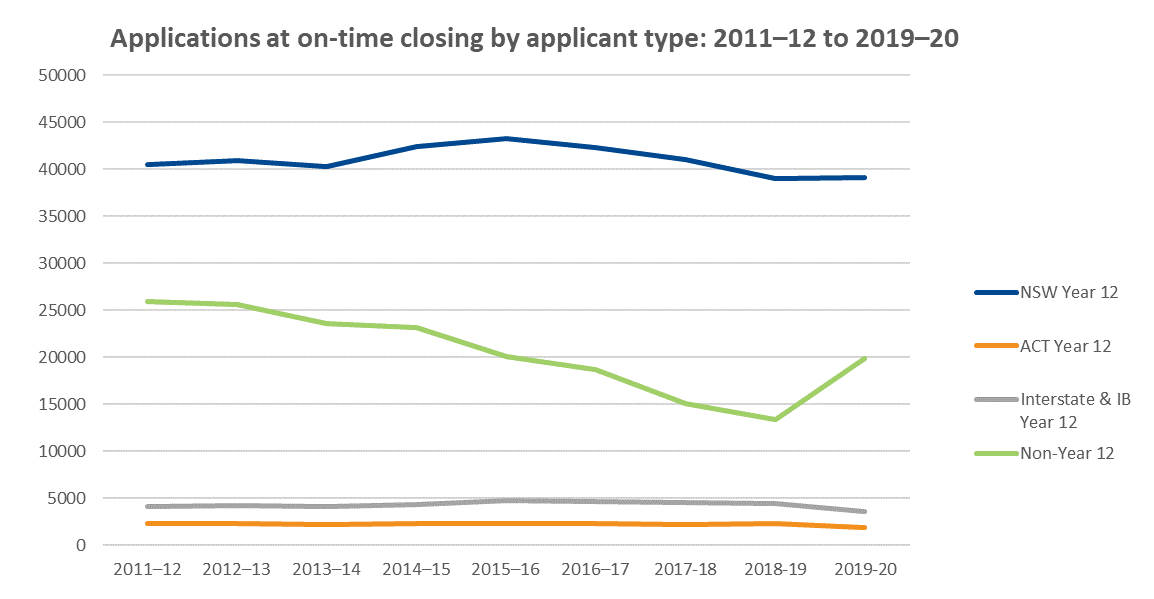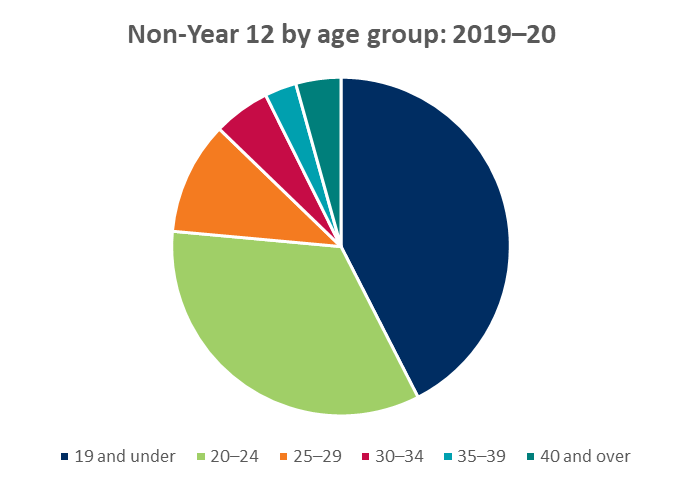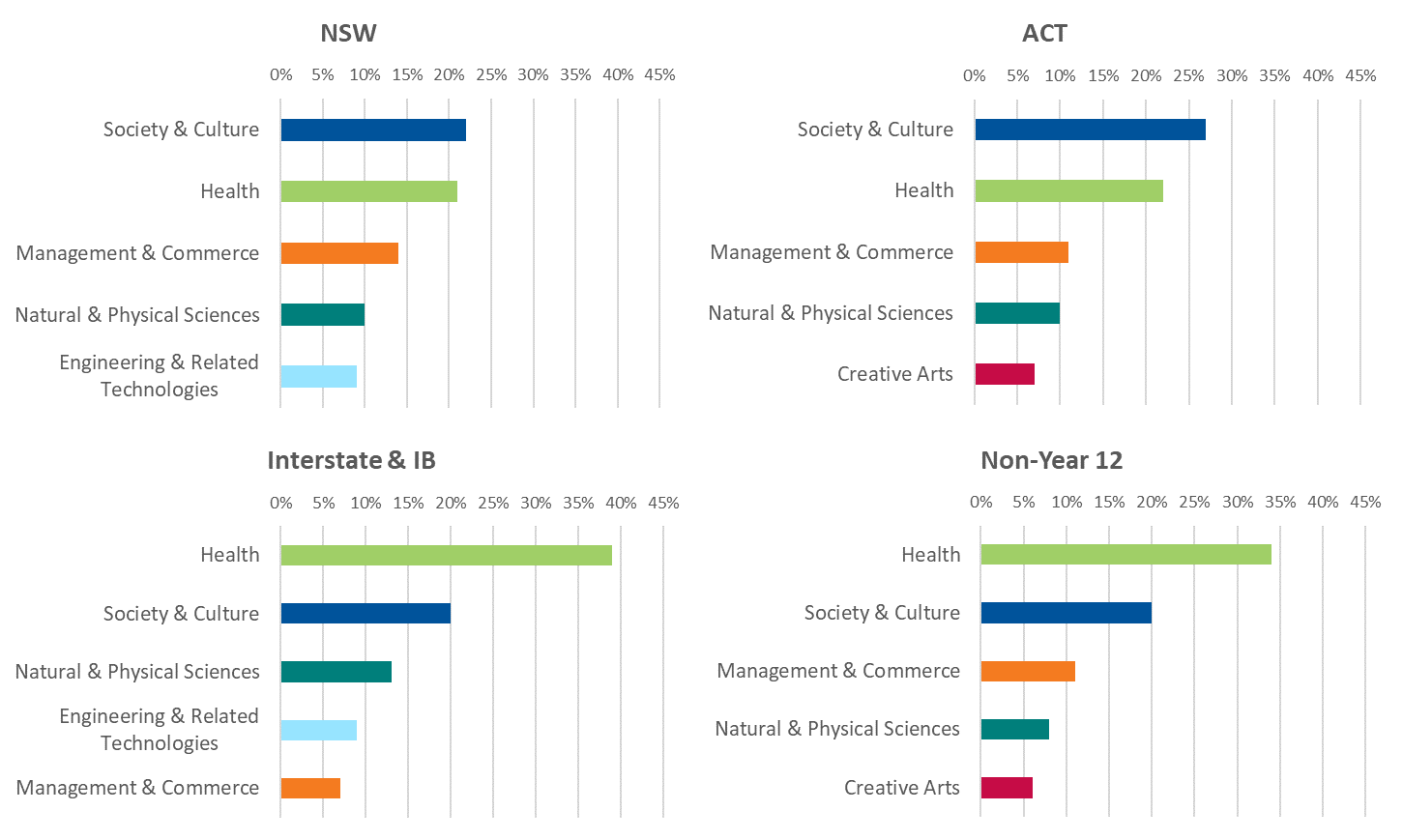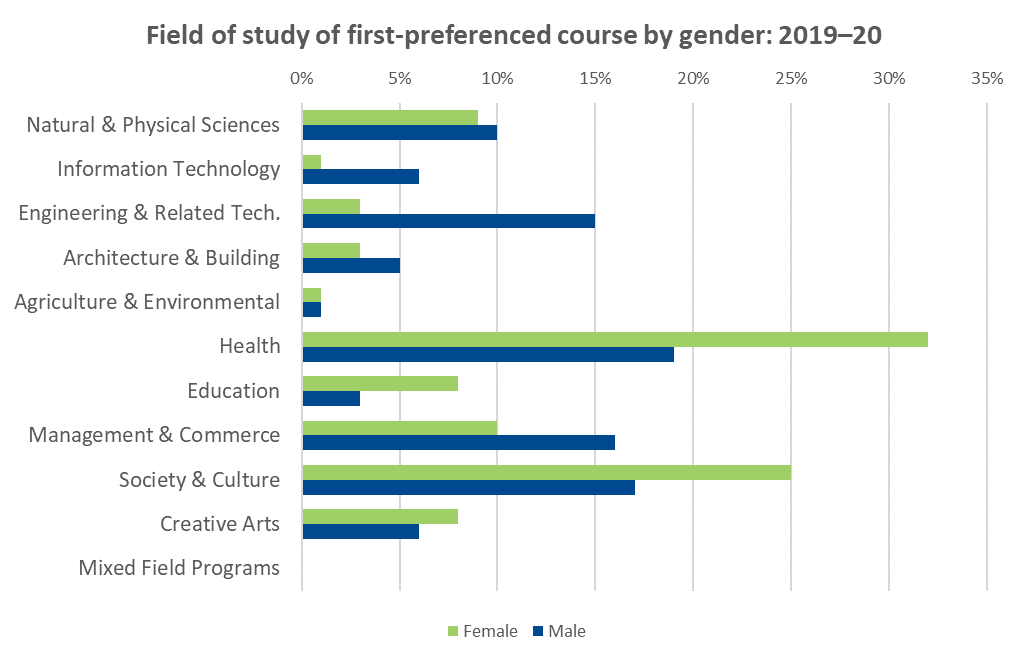31 Oct 2019
Statistics
Domestic undergraduate application statistics at early bird closing 2019
Applications for tertiary study in 2019–20 opened on Wednesday 3 April 2019 and early bird applications closed at midnight on Monday 30 September 2019. (Students can still apply after this date, but they pay a higher processing charge.)
Applications for uni in 2020 opened early this year to accommodate university trimesters and early entry and access schemes. Although not all courses for 2020 were available on opening, applicants were encouraged to choose courses as placeholders and come back later to review and change their preferences. Courses were added gradually over the ensuing months and all semester 1, 2020 courses were available from early August as per other years.
UAC received 64,443 domestic applications for undergraduate study in the first six months of the 2019–20 admissions year, 5,300 (9.0%) more than by Early Bird closing last year due to the early opening this year. Thus, current figures are not directly comparable to previous years.
Applications by applicant type
Applicants are divided into four types: NSW Year 12s, ACT Year 12s, Interstate and International Baccalaureate Year 12s, and non-Year 12s.

Gender analysis
The gender split of applicants was similar to the previous year: 57% of Year 12 applicants were female, while 58% of non-Year 12 applicants were female. For non-Year 12 applicants this represents a three-percentage drop in the proportion of female applicants.
Age analysis
Almost all Year 12 applicants were 19 years old and under (99.7%). Around three-quarters of non-Year 12 applicants were 24 years old and under. The breakdown by age group for non-Year 12 applicants is shown in the following chart.

First preference analysis
Domestic undergraduate applicants can choose up to five course preferences. Their first preference is the course they would most like to study.
First preferences by field of study and applicant type
The top five fields of study listed as first preferences by NSW and ACT Year 12 applicants were almost identical. Both groups had most first preferences in Society & Culture, followed by Health.
For non-Year 12 and interstate and International Baccalaureate Year 12 applicants, most first preferences were in Health, followed by Society & Culture.
Overall, Health has taken the top spot as the favoured field of study, with 26 per cent of early bird applicants listing it as their first preference. Society & Culture received 22 per cent of first preferences across all applicant types.

First preferences by field of study and gender
While both females and males had most first preference courses in Health, the spread of first preference courses across fields of study was more even for males than for females.
Over half of female applicants listed their first preference course in either Health (32%) or Society & Culture (25%). In contrast, popular fields of study for males included Health (19%), Management & Commerce (16%), Society & Culture (17%), and Engineering & Related Technologies (15%).
Compared with males, a smaller proportion of females had first preference courses in Engineering & Related Technologies, Management & Commerce, and Information Technology.
